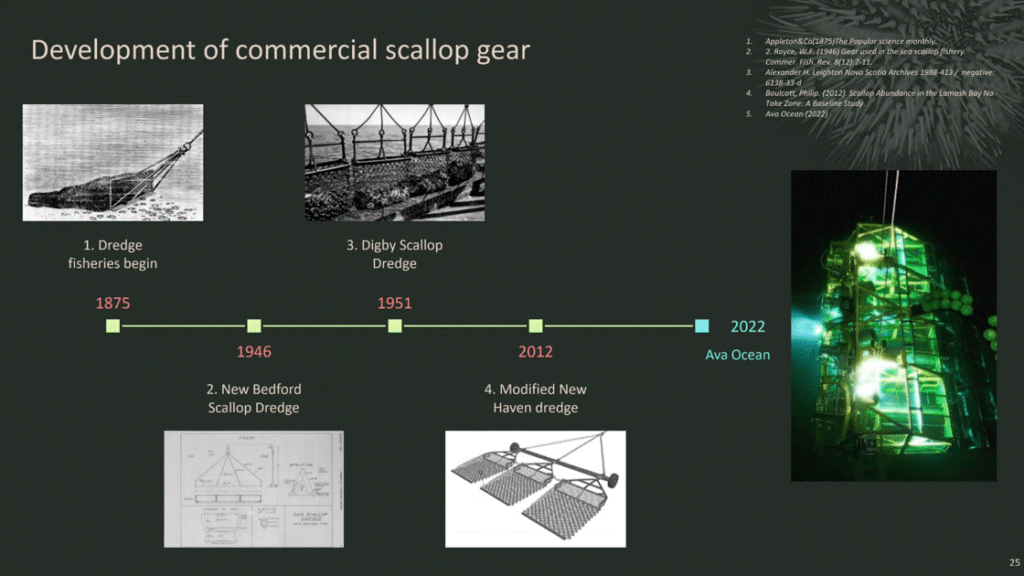- Back to NEWS & VIEWS
- Blogs
- 02/02/2024
Bottom trawling found to cause significant CO2 emissions as innovative alternatives emerge
Study states that bottom trawling, a fishing method involving dragging large nets along the seabed, results in the release of 370 million tonnes of CO2 annually
Emissions from bottom trawling are not included in global emissions totals or policies, currently. Including these emissions in Paris Agreement Considerations, could double the estimated annual emissions from fuel combustion of the global fishing fleet, which consists of approximately four million vessels.
A recently published study in Frontiers in Marine Science indicates that bottom trawling, a fishing method involving dragging large nets along the seabed, results in the release of 370 million tonnes of CO2 annually.
Covering the years 1996 to 2020, the research highlights that 55-60% of the CO2 released from the seabed during this practice enters the atmosphere within nine years.
This revelation could potentially double the estimated annual fuel combustion emissions of the global fishing fleet. The discharged carbon also contributes to local acidification and diminishes the ocean’s ability to absorb CO2, according to the analysis. (The Guardian)
As the largest carbon sink on Earth, the ocean must be conserved. Scientists have long been aware that bottom trawling – the process by which a quarter of all wild seafood is caught, including shrimp, pollock, and scallops – releases carbon from the seabed.
However, this study is the first to quantify the specific amounts of CO2 generated by this method. The researchers argue that the quantities are too substantial to ignore and lead to “marine deforestation,” causing irreparable harm to the environment, wildlife, society, and the climate.
Consequently, bottom trawling has already faced restrictions in certain areas in the US and Canada, while the UK announced further restrictions on the damaging practise today.
The study utilised information from a vessel-tracking database processed by Global Fishing Watch. It is the first to demonstrate that over half of the CO2 released by bottom trawling ultimately enters the atmosphere, contributing to global warming.
However, the researchers warn that their calculations may underestimate the amount of CO2 released into the atmosphere by trawlers, as 75% of fishing vessels are not publicly tracked.
Building upon prior research published by members of the study team, it was discovered that bottom trawling releases a comparable amount of CO2 to the entire aviation sector. This report emphasised that only 7% of the ocean currently benefits from some form of protection.
Advocating for proactive measures, the researchers proposed the identification and designation of strategic ocean areas for stewardship. These areas could encompass locations exposed to large-scale industrial fishing, key economic exclusion zones, and marine territories.
The scientists asserted that safeguarding such “strategic” areas has the potential to yield 8 million tonnes of seafood as fish stocks return to healthy levels/
The research highlights that the top 10 countries responsible for emissions from bottom trawling are China, Russia, Italy, the UK, Denmark, France, the Netherlands, Norway, Croatia, and Spain. Further, “hotspots” in the East China Sea, the Baltic, the North Sea, and the Greenland Sea are identified as the locations with the highest emissions.
Targeting regulation at these countries and hotspots may prove crucial in the fight against bottom trawling. Emissions from bottom trawling are currently not included in global emissions totals or policies.
Enric Sala of the National Geographic Society argues that the impact of CO2 emissions from such trawling is comparable to atmospheric emissions and should be included in the Paris Agreement considerations.
This inclusion could double the estimated annual emissions from fuel combustion of the global fishing fleet, which consists of approximately 4 million vessels.
Aside from emissions, bottom trawling is devastating to aquatic ecosystems, destroying almost all bottom-dwelling plants and animals in its path. As a non-selective technique, bycatch is common, with the practice accounting for 92% of recorded fisheries discards in the EU.
It is also responsible for the bycatch of vulnerable species such as sharks, rays, sea turtles, and cetaceans. The removal of these keystone species undermines entire ecosystems, causing impacts that reverberate throughout the food chain.
Today, innovative solutions seek to reduce the environmental damage caused by bottom trawling and its associated emissions. AVA Ocean’s precise seabed harvester is one example.
Here, scallops are gently and efficiently picked from the ocean floor. The harvester has a low impact on the benthic sediment and low bycatch rates due to its ability to identify, select and sort bottom-dwelling species.
As a result, the company were awarded the first commercial licence for Arctic scallops in Norway since the early 1990s, where dredging has been banned for 30 years. A timeline detailing the development of bottom trawling technology can be seen below.
